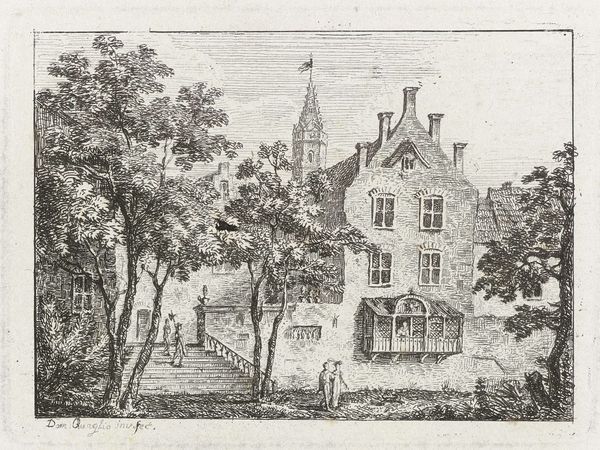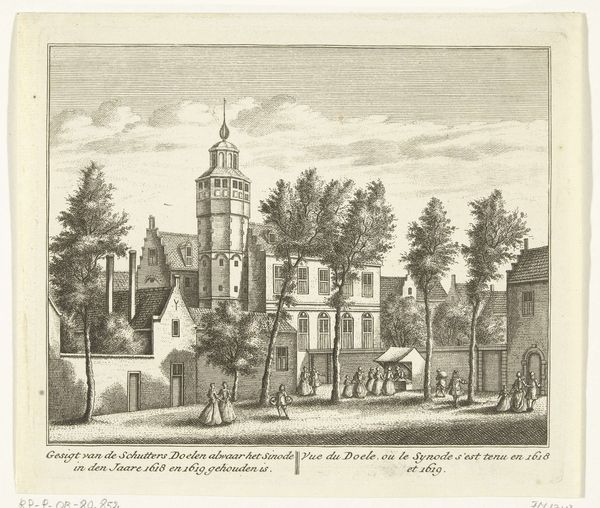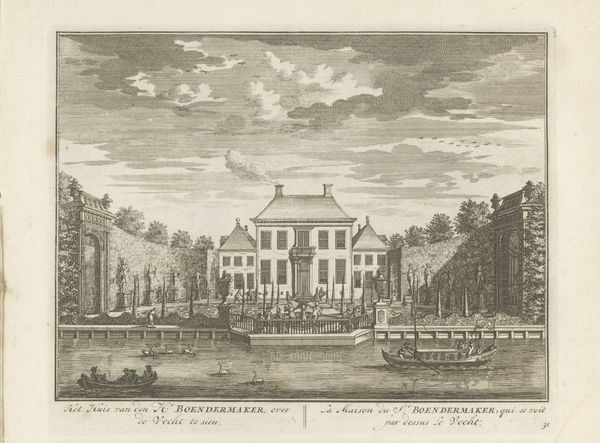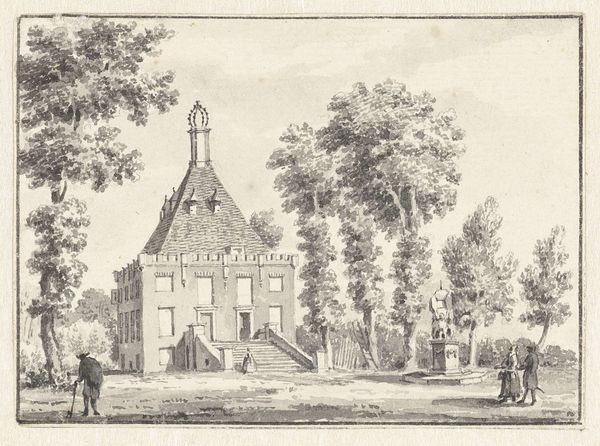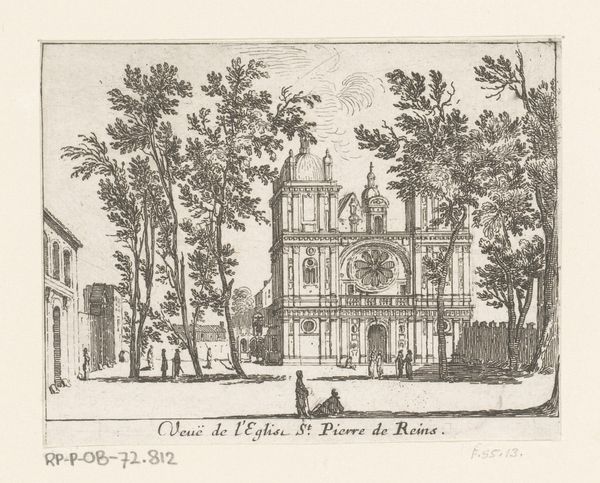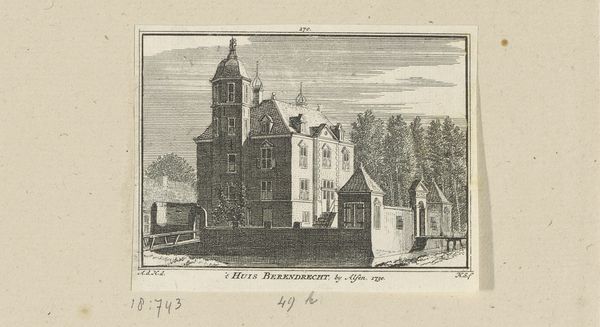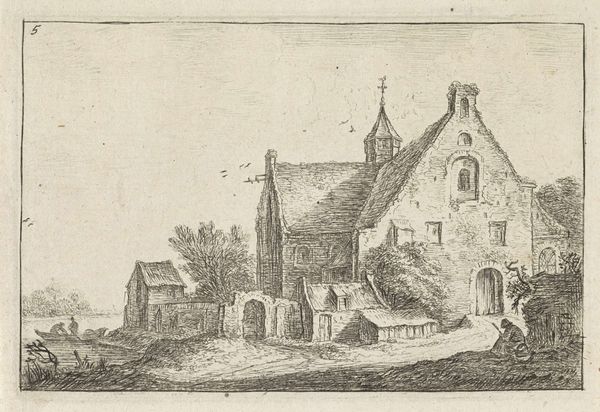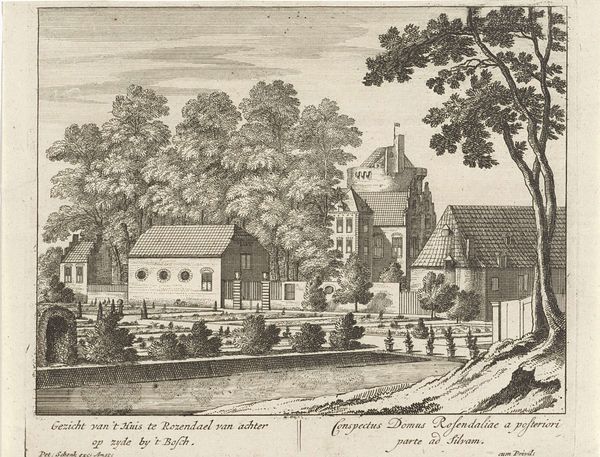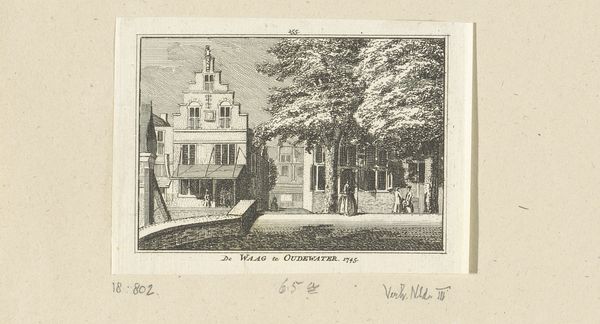
drawing, print, paper, engraving
#
drawing
#
baroque
# print
#
landscape
#
paper
#
engraving
Dimensions: height 80 mm, width 115 mm
Copyright: Rijks Museum: Open Domain
Editor: We’re looking at "Gezicht op Huis Ameliastein, 1607" by Abraham Rademaker. It's an engraving made with print on paper sometime between 1727 and 1733. The detail is astonishing. I’m struck by how the artist renders light and shadow. How do you approach analyzing a piece like this? Curator: Note the graphic lines' essential role; their varying thickness describes forms and textures masterfully. Consider how Rademaker utilizes linear perspective to create depth and spatial recession within the composition. The placement of the trees as framing devices, combined with the mirroring in the water, invites the eye to appreciate the architectural structure in the middleground. How do these features coalesce, shaping the entire visual experience? Editor: The mirroring creates a strong sense of balance, and the details in the architecture contrast with the somewhat loose rendering of the trees. Do you find that the tension between these formal elements makes the piece more engaging? Curator: Precisely. Observe the contrast between organic and geometric forms, nature, and artifice. Also note the interplay between foreground, middle ground and background and their reciprocal effect. This kind of contrast adds to the dynamism. Editor: I see what you mean. Looking at it as a system of forms helps me understand its aesthetic impact so much more clearly. Thanks! Curator: It is through careful observation and analysis of these individual elements that the piece reveals its internal structure and its sophisticated understanding of composition and technique.
Comments
No comments
Be the first to comment and join the conversation on the ultimate creative platform.
